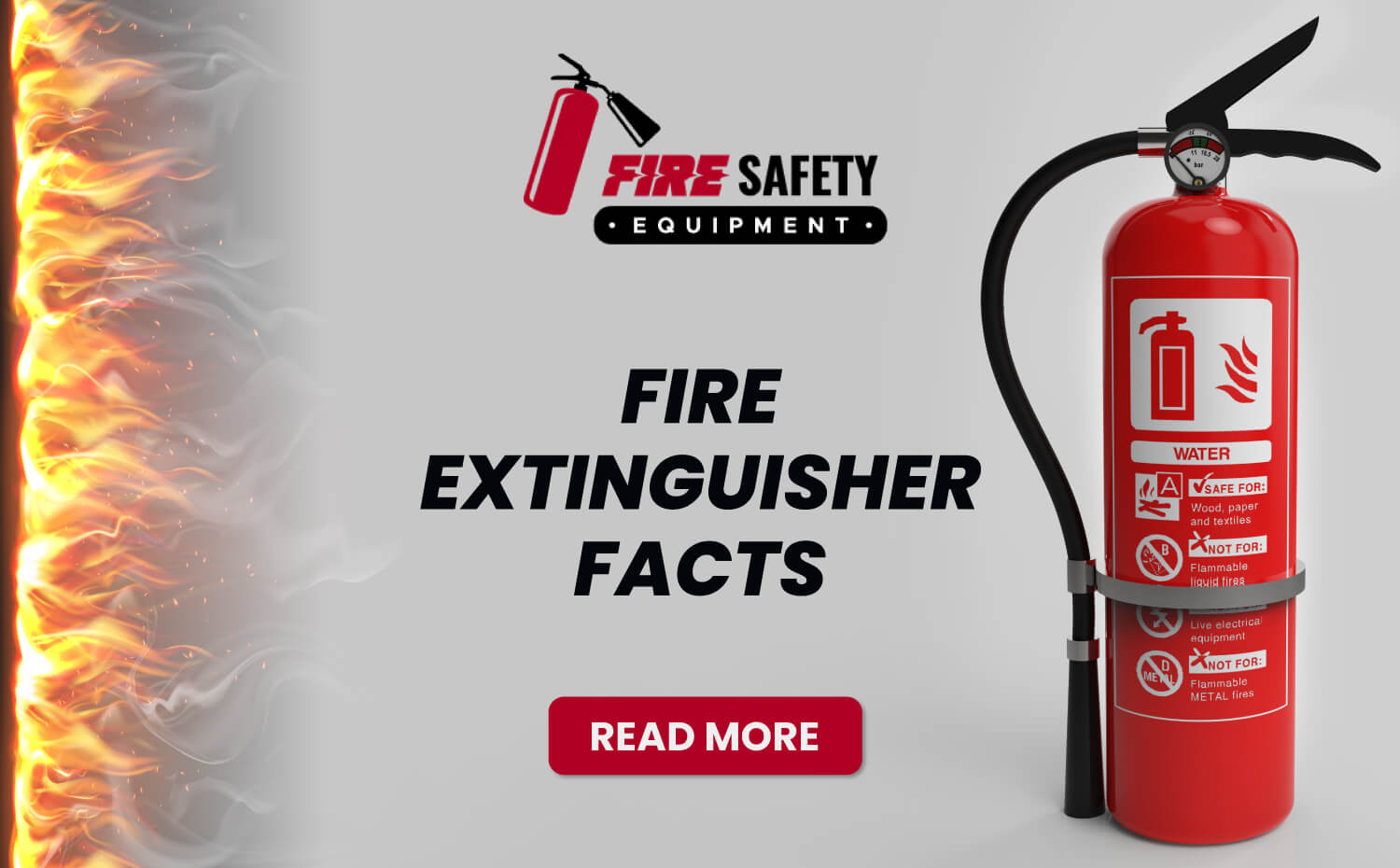Fire Extinguisher Facts
Posted by Fire Safety Equipment on 18th May 2022
Fire Extinguisher Facts
We all know what fire can do. We harness it in its manageable state because it has qualities that benefit us, but an uncontrolled fire can wreak havoc and consume not just possessions but also lives. We have fire extinguishers for this reason. It controls and suppresses a fire before things go out of hand.
In case you are unfamiliar with what a fire extinguisher is, here are some facts for you:
#1. There Are Corresponding Extinguishers for Different Fuel and Fire Types
Fire types correspond to an extinguisher because the wrong one is ineffective. The five extinguisher types are water, CO2, foam spray, wet chemicals, and ABC power. Below is the list of the different fire types:
- Ordinary flammable materials (wood, paper, and textiles)
- Kitchen related combustibles (cooking oils, lard, and deep fat fires)
- Live electrical equipment
- Flammable liquids (grease, paint, and gasoline)
- Flammable metals.
- Gaseous fires
#2. Recharge After Every Use
Recharge means to refill after every use. It is a standard practice to replenish the fire extinguisher canister even if you discharged a small amount accidentally. It's for the sake of future use because that slight discharge could mean life or death for the next one to use the fire extinguisher. Never disregard this fact and always keep it in mind.
#3. Regular Maintenance
Your fire extinguisher needs regular visual and physical inspections. These inspections determine whether the fire extinguisher is still functional and ensure that its integrity is still intact. Here is a checklist for the visual inspection: Note that the assessment needs a competent person checking every month.
- Is it fully charged?
- Where is the fire extinguisher placed?
- Are there any visible damages to any part(s) of the extinguisher?
- Is the nozzle free from any blockages?
- Is both the pin and seal in place?
- How easy is it to access?
Qualified and experienced technicians are the only ones who should service your fire extinguishers annually. They can also notify you of any violations, make recommendations for corrective action, and supply you with a certificate so that you can show implementing authority that you comply with the rules. They will look for two things:
- The type, number, and location of your extinguishers.
- The fire extinguisher's condition
#4. They Eventually Give In to Entropy
Nothing lasts forever, and even your fire extinguishers need some replacing, eventually. You have to keep in mind the purchasing date of the fire extinguisher and set a maintenance schedule to ensure its functionality. The rechargeable canisters must pass a hydro test per twelve years to remain in use, while the disposable ones need replacement after twelve years.
#5. Remember to Follow PASS
You need to undergo training for you to use a fire extinguisher properly. The reason is due to the different situations that might cause more harm. An example of this is when there are other substances mixed in, like aerosol. During the training, you might come across PASS. Here's what it means:
- Pull the pin from the top of the extinguisher.
- Aim the nozzle at the base.
- Squeeze the handle slowly and steadily.
- Sweep from left to right or side to side aiming at the base of the fire
Conclusion
Simply having a fire extinguisher is no longer enough; there is also a need for proper training on using it. You will benefit from fire training and awareness events. You can also contact a professional for some advice. Consider reaching Fire Safety Equipment for your inquiries about fire extinguisher products.
